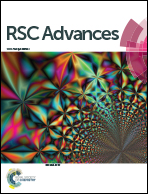Comparison of tribocorrosion behavior between 304 austenitic and 410 martensitic stainless steels in artificial seawater
Abstract
In order to obtain a comprehensive understanding of the tribocorrosion performance of 304 austenitic and 410 martensitic stainless steels in artificial seawater, systematic tests were carried out in this work. The results from intermittent test revealed that load and sliding speed had great influence on the cathodic shift of OCP caused by sliding wear. Through potentiodynamic and potentiostatic polarization tests, which were performed under cathodic, OCP and anodic potentials, it was confirmed that synergistic effects existed between wear and corrosion and were linked with applied potential. In addition, it was found that tribocorrosion behavior of the two alloys was affected by microstructural characteristics and chemical composition, which were closely related to the mechanical properties and repassivation kinetics of passive film. Particularly, 304SS exhibited a better localized corrosion resistance compared with that of 410SS due to the higher content of chromium and nickel. For both materials, hardness inside the wear track was higher compared with the unworn surface due to a rubbing-induced hardening effect.


 Please wait while we load your content...
Please wait while we load your content...